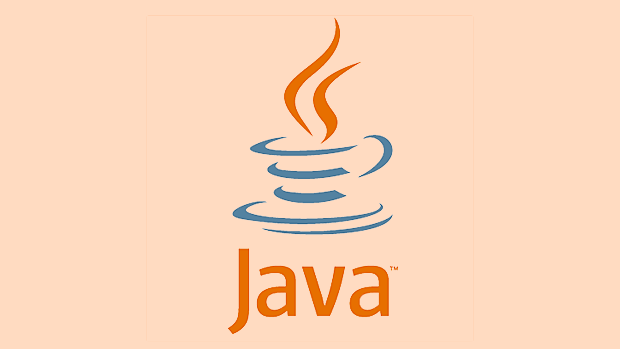You should use the assert keyword in Java to test assumptions during development and debugging, particularly for catching logic errors that indicate internal bugs. 1. Assert is used to perform internal consistency checks, such as validating method return values or private method parameters. 2. It helps verify control flow assumptions, like ensuring all cases are covered in a switch statement. 3. Assert can document assumptions, making code clearer for future developers. However, 1. it should not be used for handling user input or external data errors, which require exceptions. 2. Avoid performing side effects within assert conditions since they may be disabled in production. 3. Do not rely on assert in public APIs or for critical error handling, as assertions are typically disabled in runtime environments. An assert statement has two forms: assert condition; and assert condition : errorMessage;, with the latter being preferred for providing detailed failure messages.

You should use the assert keyword in Java when you want to test assumptions during development and debugging, especially for catching logic errors that shouldn't happen in normal operation. It's not meant for handling expected error conditions like invalid user input or network failures — that’s what exceptions are for. Instead, assert is best used to catch internal bugs early.

What Does assert Actually Do?
In Java, assert is a statement that tests a boolean condition. If the condition is false, it throws an AssertionError. This is useful for checking things you believe should always be true at a certain point in your code.

For example:
assert x > 0 : "x should be positive";
This line says: “I expect x to be greater than zero. If not, stop and tell me why.” The optional message helps explain what went wrong.

By default, assertions are disabled at runtime. You need to enable them using the -ea (enable assertions) flag when running your program:
java -ea MyProgram
If you forget this flag, none of your assert statements will do anything — so make sure to turn them on during testing.
When Should You Use assert?
Use assert for sanity checks in your code — places where something going wrong would indicate a bug, not a normal failure case.
Here are a few typical scenarios:
- Internal consistency checks: For example, verifying that a method's return value falls within expected bounds.
- Private method parameters: Public methods should validate inputs with exceptions, but private ones can use asserts if you control all callers.
- Control flow assumptions: Like confirming that a switch statement covers all possible cases.
- Documenting assumptions: Sometimes
assertserves as documentation more than enforcement, helping future developers understand your expectations.
A practical example:
private int calculateDiscount(int percentage) {
assert percentage >= 0 && percentage <= 100 : "Percentage must be between 0 and 100";
// proceed with calculation
}This makes sense because if someone passes -5, it’s probably a mistake in the calling code, not a runtime condition you expect to handle gracefully.
When Not to Use assert
There are clear boundaries around appropriate usage. Avoid using assert when:
- Handling user input or external data: These are expected failure points. Use regular exceptions (
IllegalArgumentException, etc.) instead. - Performing side effects in the assert condition: Never write
assert someMethodThatChangesState()— because asserts can be disabled, your program behavior should not depend on them. - In public APIs or production error handling: Since they’re often turned off in production, relying on them for critical validation is risky.
Also, don’t use assert just to log values or trace execution flow. That’s what logging frameworks are for.
How to Structure Assert Statements
Java allows two forms of assert:
assert condition;assert condition : errorMessage;
The second form is usually better because it gives more context when something goes wrong. The error message can be a string or any expression that evaluates to a value (like a number or object).
Try to make the message informative but concise. Include variable values if they help diagnose the issue.
Example:
assert list != null && !list.isEmpty() : "List was unexpectedly null or empty";
Or even better:
assert list != null && !list.isEmpty() : "List size: " list.size();
This way, when the assert fails, you get more insight into what went wrong without having to dig into the debugger right away.
So those are the main points about using assert in Java — it’s a lightweight tool for developers, not users. Keep it focused on catching bugs, not managing runtime errors.
The above is the detailed content of When and How to Use the 'assert' Keyword in Java. For more information, please follow other related articles on the PHP Chinese website!

Hot AI Tools

Undress AI Tool
Undress images for free

Undresser.AI Undress
AI-powered app for creating realistic nude photos

AI Clothes Remover
Online AI tool for removing clothes from photos.

Clothoff.io
AI clothes remover

Video Face Swap
Swap faces in any video effortlessly with our completely free AI face swap tool!

Hot Article

Hot Tools

Notepad++7.3.1
Easy-to-use and free code editor

SublimeText3 Chinese version
Chinese version, very easy to use

Zend Studio 13.0.1
Powerful PHP integrated development environment

Dreamweaver CS6
Visual web development tools

SublimeText3 Mac version
God-level code editing software (SublimeText3)

Hot Topics
 Difference between HashMap and Hashtable?
Jun 24, 2025 pm 09:41 PM
Difference between HashMap and Hashtable?
Jun 24, 2025 pm 09:41 PM
The difference between HashMap and Hashtable is mainly reflected in thread safety, null value support and performance. 1. In terms of thread safety, Hashtable is thread-safe, and its methods are mostly synchronous methods, while HashMap does not perform synchronization processing, which is not thread-safe; 2. In terms of null value support, HashMap allows one null key and multiple null values, while Hashtable does not allow null keys or values, otherwise a NullPointerException will be thrown; 3. In terms of performance, HashMap is more efficient because there is no synchronization mechanism, and Hashtable has a low locking performance for each operation. It is recommended to use ConcurrentHashMap instead.
 What are static methods in interfaces?
Jun 24, 2025 pm 10:57 PM
What are static methods in interfaces?
Jun 24, 2025 pm 10:57 PM
StaticmethodsininterfaceswereintroducedinJava8toallowutilityfunctionswithintheinterfaceitself.BeforeJava8,suchfunctionsrequiredseparatehelperclasses,leadingtodisorganizedcode.Now,staticmethodsprovidethreekeybenefits:1)theyenableutilitymethodsdirectly
 How does JIT compiler optimize code?
Jun 24, 2025 pm 10:45 PM
How does JIT compiler optimize code?
Jun 24, 2025 pm 10:45 PM
The JIT compiler optimizes code through four methods: method inline, hot spot detection and compilation, type speculation and devirtualization, and redundant operation elimination. 1. Method inline reduces call overhead and inserts frequently called small methods directly into the call; 2. Hot spot detection and high-frequency code execution and centrally optimize it to save resources; 3. Type speculation collects runtime type information to achieve devirtualization calls, improving efficiency; 4. Redundant operations eliminate useless calculations and inspections based on operational data deletion, enhancing performance.
 What is an instance initializer block?
Jun 25, 2025 pm 12:21 PM
What is an instance initializer block?
Jun 25, 2025 pm 12:21 PM
Instance initialization blocks are used in Java to run initialization logic when creating objects, which are executed before the constructor. It is suitable for scenarios where multiple constructors share initialization code, complex field initialization, or anonymous class initialization scenarios. Unlike static initialization blocks, it is executed every time it is instantiated, while static initialization blocks only run once when the class is loaded.
 What is the Factory pattern?
Jun 24, 2025 pm 11:29 PM
What is the Factory pattern?
Jun 24, 2025 pm 11:29 PM
Factory mode is used to encapsulate object creation logic, making the code more flexible, easy to maintain, and loosely coupled. The core answer is: by centrally managing object creation logic, hiding implementation details, and supporting the creation of multiple related objects. The specific description is as follows: the factory mode handes object creation to a special factory class or method for processing, avoiding the use of newClass() directly; it is suitable for scenarios where multiple types of related objects are created, creation logic may change, and implementation details need to be hidden; for example, in the payment processor, Stripe, PayPal and other instances are created through factories; its implementation includes the object returned by the factory class based on input parameters, and all objects realize a common interface; common variants include simple factories, factory methods and abstract factories, which are suitable for different complexities.
 What is the `final` keyword for variables?
Jun 24, 2025 pm 07:29 PM
What is the `final` keyword for variables?
Jun 24, 2025 pm 07:29 PM
InJava,thefinalkeywordpreventsavariable’svaluefrombeingchangedafterassignment,butitsbehaviordiffersforprimitivesandobjectreferences.Forprimitivevariables,finalmakesthevalueconstant,asinfinalintMAX_SPEED=100;wherereassignmentcausesanerror.Forobjectref
 What is type casting?
Jun 24, 2025 pm 11:09 PM
What is type casting?
Jun 24, 2025 pm 11:09 PM
There are two types of conversion: implicit and explicit. 1. Implicit conversion occurs automatically, such as converting int to double; 2. Explicit conversion requires manual operation, such as using (int)myDouble. A case where type conversion is required includes processing user input, mathematical operations, or passing different types of values ??between functions. Issues that need to be noted are: turning floating-point numbers into integers will truncate the fractional part, turning large types into small types may lead to data loss, and some languages ??do not allow direct conversion of specific types. A proper understanding of language conversion rules helps avoid errors.
 What is synchronization?
Jun 24, 2025 pm 08:21 PM
What is synchronization?
Jun 24, 2025 pm 08:21 PM
Synchronizationistheprocessofcoordinatingtwoormorethingstostayaligned,whetherdigitalorphysical.Intechnology,itensuresdataconsistencyacrossdevicesthroughcloudserviceslikeGoogleDriveandiCloud,keepingcontacts,calendarevents,andbookmarksupdated.Outsidete






